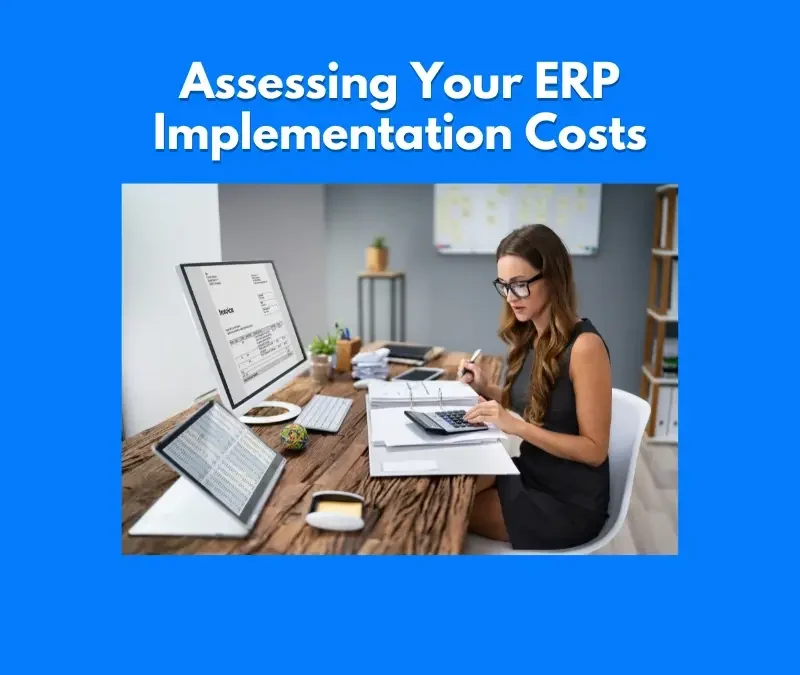SAP Articles
2025 Trump Tariffs Explained: What They Mean for Your Money
Noel DCosta
- Last Update :
Now I normally don’t write articles related to political decisions – but I need to set the scene for my readers to understand the business impact side of President Trump’s tariffs on the economy.
In the new world of tariffs, if you are going to configure your SAP system, you need to be clear on what’s changing and how to implement the change.
Trump Tariffs are taxes the government puts on imported goods. They’re often called trade protection, but regular shoppers end up paying for them. In 2025, President Trump hit imports with huge tariffs:
- 10% tax on ALL imports
- 145% tax on Chinese products
- 20-25% tax on EU, Canadian, Mexican goods
Other countries fought back:
- China: 125% taxes on US farm goods and technology
- EU: Taxes on US cars, whiskey
- Canada: Taxes on US steel, farm products
What does this mean for the consumer? These taxes make everything cost more. You’ll see fewer products in stores. Quality drops. Inflation goes up.
A Fed study from 2019 proved consumers paid almost all the costs of previous tariffs. With these bigger tariffs in 2025, it’s even worse.
Let’s understand the impact of these tariffs and in another article, we will talk about how to implement these tariffs in your SAP implementation.

The reality is that tariffs don’t just hit businesses—they quietly work their way into the prices you and I pay every day.If companies can’t absorb the extra costs, you can bet those higher prices will show up on your next invoice, shopping trip, or home project.
10 Key Takeaways of the Trump Tariffs
- The United States has added a 10% tariff across nearly all imported goods starting this month. If you’re buying anything that comes from overseas, expect to feel it soon.
- Chinese products have been hit especially hard, with a new 145% tariff on electronics, clothing, and industrial parts.
- Imports from some of America’s closest trading partners, like the European Union, Canada, and Mexico, are now facing tariffs between 20% and 25%, which is already creating tension.
- If you’re shopping for a new car, you’ll want to know that a 25% tariff is now in place on imported cars and car parts, and yes, that includes brands you thought were safe.
- Steel and aluminum are caught up in this too, and that matters because it affects everything from canned goods to construction materials.
- At the same time, other countries aren’t sitting back quietly—China, Canada, and Europe have fired back with their own tariffs on American exports.
- You’re probably wondering, “How fast will this hit me?” Well, retailers and manufacturers are already warning about price hikes coming later this year, especially on electronics, vehicles, and anything with a heavy import footprint.
- Some companies are scrambling to reroute their supply chains to countries like Vietnam and Mexico, but that’s not something that happens overnight.
- If you’re in construction, retail, or manufacturing, you’re already seeing material quotes climb, and it’s only the beginning.
- Trade groups are pushing back hard, arguing that these new tariffs could end up hurting American businesses and, in the end, your wallet too.
How does Trump Tariffs Directly Impact Customer Prices

1. Tariffs Increase Costs for Importers:
- Importers pay taxes upfront at the border. When a shipping container arrives, customs won’t release goods until the tariff is paid. This hits cash flow immediately. No way around it.
- For many businesses, these tariff costs can’t be absorbed. They need to recover this money somehow. The math is simple – pay more to get products, charge more to sell them.
- Small importers suffer most. They lack the cash reserves of bigger companies. Often can’t negotiate better terms with suppliers. Their margins were already thin before tariffs.
2. Businesses Pass Tariffs to Customers
- Retailers don’t absorb these costs. They add them to price tags. Look at your receipts. Many stores now show “tariff surcharges” right on the bill.
- Best Buy, Home Depot, Lowe’s – they all do this. They show exactly how much extra you’re paying because of trade policies. Some charge flat fees. Others add percentages to certain products.
- Even online marketplaces adjusted their pricing algorithms. Amazon sellers update prices weekly now. eBay listings cost more. Product descriptions often explain the price increases.
3. Example Cases
- Washing machines tell the whole story. After steel tariffs, prices jumped $86 on average. Same machine, same features, higher price.
- Electronics got hit hard too. Smartphones cost $50-200 more because of component tariffs. Laptops jumped 5-15% in price. Game consoles cost more too.
- TV prices increased across the board. The parts come from all over – China, Korea, Mexico. Each part gets taxed differently. All those costs end up in the final price.
- Car prices went up about $1,800 per vehicle on average. Dealerships now include tariff adjustment fees. Auto parts for repairs cost more too. Even oil changes cost a few dollars extra.
4. Key Point
- Even American-made stuff costs more. That’s the part many folks miss. A US factory making refrigerators still needs imported parts. Steel, computer chips, wiring – all taxed at the border.
- When raw materials cost more, everything made from them costs more. So even “Made in USA” products get more expensive when tariffs hit their supply chain.
- A Michigan furniture maker will see wood costs rise 25%. They build everything in America. But their imported lumber from Canada will face tariffs. They will have to raise prices.
- Interestingly, many products hit with tariffs don’t have easy domestic alternatives. Companies can’t just switch suppliers overnight. Building new supply chains takes years. Meanwhile, customers pay the higher prices.
- The effect spreads across entire product categories. Companies that avoided direct tariff impacts still raise prices. They match their competitors who did get hit. Market pricing tends to level out, usually at the higher end.
Trump Tariffs: Pre-2025 vs. April 2025 Rates
| Country | Average Tariff Rate (Pre-2025) | Tariff Rate (April 2025) | Notes |
|---|---|---|---|
| United States | 1.6% | 25.3% | Tariff increases across steel, aluminum, and technology imports. |
| China | 3.0% | Up to 125% | Retaliatory tariffs on U.S. soybeans, automobiles, tech goods. |
| European Union | 2.7% | 20% | Tariffs on Harley-Davidson, bourbon, and U.S. agriculture. |
| Japan | 1.9% | 24% | Targeted vehicle parts and steel imports from the U.S. |
| India | 12.0% | 26% | Increased tariffs on almonds, apples, and other agricultural imports. |
| South Korea | 8.4% | 25% | Raised tariffs on U.S. cars, tech, and agricultural goods. |
| United Kingdom | 3.3% | 10% | Minimal retaliation but selectively raised tariffs post-Brexit. |
| Brazil | 6.7% | 12% | Raised tariffs on U.S. ethanol and agricultural commodities. |
| Canada | 3.4% | 25% | Strong retaliation on steel, aluminum, and dairy products. |
| Mexico | 3.9% | 25% | Raised tariffs on pork, cheese, and steel from the U.S. |
| Australia | 2.5% | 10% | Maintained low tariffs, only minimal retaliatory measures. |
| Russia | 5.3% | 35% | Increased tariffs on heavy machinery and agriculture goods from U.S. |
| Vietnam | 5.1% | 46% | Imposed higher tariffs on agricultural and clothing imports from U.S. |
| Indonesia | 5.3% | 32% | Raised tariffs on U.S. electronics and food products. |
| Switzerland | 1.7% | 31% | Focused tariff increases on U.S. pharmaceutical and machinery imports. |
Note: The level of tariffs are changing on a daily basis.
How Trump Tariffs Reduce Customer Choices
1. Withdrawal of Products
- When tariffs hit hard, some products just disappear from stores. Companies look at their bottom line and cut items that don’t make money anymore.
- Specialty food imports will take a big hit. Many European snacks and drinks will vanish from shelves. It wouldn’t make business sense at an extra 25% costs.
- Tech stores will lose variety too. Those unique gadgets from smaller Asian manufacturers? Gone. Tariffs pushed prices too high for their market.
- Some luxury brands pulled out completely. Italian handbags, French wines, Japanese electronics – many premium brands will understand that the US market will not be worth the trouble anymore.
2. Substituting Lower-Quality Alternatives
- To keep prices somewhat reasonable, companies find cheaper ways to make things. They switch materials. Use simpler designs. Find lower-cost factories.
- Look at appliances today and if you compare them with that will come in the future, it will be the same price point but thinner metal. Cheaper heating elements. Plastic where there used to be steel.
- Clothing will show a similar pattern. Fewer stitches per inch. Thinner fabric. More synthetic blends instead of pure cotton. All to keep prices from jumping too much.
3. Example Cases
- The clothing industry will also shift fast. Production might move from China to countries with lower tariffs. Quality will suffer during the transition. Colors will fade faster on new imports. Buttons will fall off sooner. Sizes will run less consistent.
- Car parts will tell a similar story. Mechanics will hate the new replacement parts. They would fail more often. It wouldn’t fit as well, and they will wear out faster. All because manufacturers will switch to cheaper suppliers to fight tariff costs.
- Electronics will get simplified with fewer features, less durable materials, and shorter warranties. Companies will redesign products to use components that dodge the highest tariffs.
- For shoppers, this will mean fewer good options in every price range. Premium products will cost too much. Budget products won’t last. Middle-range stuff will disappear entirely.

How Trump Tariffs Affect Service Industries

1. Indirect Service Price Increases
- Tariffs will hit services too, not just products. Most people miss this part. Service businesses depend on materials and tools that cross borders.
- Construction costs will explode after the metal tariffs. Builders will not be able to absorb these costs, which they will pass to customers. A basic home build would cost $12,000 more on average than before tariffs. All because of higher material prices.
- Plumbers will charge more too. Copper pipes will face steep tariffs. PVC parts will cost more. Even the tools plumbers use will get more expensive. A typical bathroom remodel will cost 15-20% more now.
- HVAC companies will struggle with parts costs. Air conditioners use imported components. Refrigerants now face chemical tariffs. Service calls that used to cost $200 now, will run $275+. Same work, higher bills.
- Auto shops will feel this pain deeply. Nearly every part has some imported component. Mechanics will pay more at their suppliers. Then customers will pay more for repairs.
2. Examples
- Home projects show the tariff impact clearly. Roofing costs jumped about 18% after the steel tariffs. A typical roof replacement that cost $8,000 before now runs $9,500+.
- Fencing prices spiked too. Chain link fencing will now double in price. Wood fencing would cost 30% more. Even vinyl options will increase despite being made domestically – they will use imported additives and machinery.
- Home renovations now require more budget now. Kitchen remodels will cost about 22% more than pre-tariff days. Countertops, fixtures, cabinets – will also be affected by various tariff categories.
- Car maintenance costs will hit families hard. Brake jobs will cost 25% more. Oil changes will increase by $5-10. Tire prices will go up by 15%. Regular maintenance on a sedan will run to about $350 more yearly than before tariffs.
- Even smaller repairs will cost more. Replacing a side mirror on a Honda will go from $210 to $285. A timing belt service will increase from $600 to $780. These price jumps come directly from parts tariffs.
How Trump Tariffs Create Broader Economic Impacts on Customers

1. Inflationary Pressure
- Tariffs don’t just raise prices on specific products. They trigger wider inflation across the economy. This hits everyone, even people who don’t buy imported goods.
- When basic materials cost more, everything made from them costs more. Steel tariffs don’t just affect cars. They affect nails, wire, tools, appliances, and thousands of other products. These price increases spread through the economy like ripples in a pond.
- The Federal Reserve estimates that the 2025 tariffs added 1.3% to overall inflation. That might sound small, but it compounds every price increase consumers already face. It means everything costs more – groceries, services, utilities.
- Even domestic products raise prices when imports get expensive. American companies often match the new higher price points set by their international competitors. They keep the extra as profit.
2. Wage Pressure Mismatch
- While prices shoot up, wages crawl. Most workers haven’t seen pay increases that match these tariff-driven price hikes. The average household now spends $1,200 more yearly because of tariffs. But median income rose only $780.
- This gap creates real hardship. Families make tough choices. Skip vacations. Delay home repairs. Buy cheaper groceries. The math simply doesn’t work anymore for many budgets.
3. Economic Uncertainty
- Companies hate uncertainty. When tariffs create unstable prices and supply chains, businesses freeze. They delay new factories. Hold off on expansions. Wait to hire.
- This caution means fewer new jobs. Slower economic growth. Less innovation. Many companies report shelving major projects specifically because of tariff uncertainty.
- Consumer confidence dropped sharply after the 2025 tariffs. People worried about future price increases. They saved more, spent less. This further slowed economic growth in a dangerous cycle.
4. Sector-specific Impacts
- Some industries suffer more than others. Retail margins were already thin before tariffs. Now many stores struggle to survive with higher inventory costs.
- Agriculture faces both higher equipment costs and retaliatory tariffs on exports. Farm bankruptcies increased 32% since the tariffs began.
- The auto industry took multiple hits. Higher production costs. Higher parts prices. Lower export sales due to retaliation. Several plants reduced shifts or closed completely.
- These sector problems affect workers and customers alike. Job losses in these industries mean less spending power in entire communities.
How Trump Tariffs Create Broader Economic Impacts on Customers
| Impact Area | Description | Customer Effect |
|---|---|---|
| Consumer Prices | Tariffs increased the cost of imported goods across multiple industries. | Higher retail prices on everyday items like electronics, vehicles, and groceries. |
| Product Variety | Companies limited product lines to manage rising import expenses. | Reduced options for customers when shopping for imported goods. |
| Product Launch Delays | Businesses delayed product rollouts to reassess supply chain strategies. | Longer wait times for new technology and consumer goods. |
| Business Costs | Operating expenses rose due to higher material and component costs. | Businesses passed costs to customers through price increases. |
| Recession Risk | Global trade disruptions contributed to slower economic growth. | Increased job insecurity and reduced consumer spending power. |
| Consumer Behavior | Economic uncertainty altered consumer spending patterns. | Postponed large purchases and reduced discretionary spending. |
| U.S. Export Competitiveness | Retaliatory tariffs made U.S. goods less competitive internationally. | Reduced demand for U.S.-made goods, impacting domestic jobs. |

See How I Make Your ERP and AI System Selection or Implementation right for you.
ERP & AI System Selection – Identify and choose the right ERP or AI-enabled platform to fit your business needs.
Project Support & Recovery – Keep your project on track or bring failing implementations back under control.
ERP Modernization – Transform existing ERP systems to modern, efficient, and scalable ERP environments.
GET IN TOUCHCase Studies to Assess Trump Tariffs
1. U.S. Soybean Farmers (2018–2020, now again 2025)
- American soybean farmers faced severe impacts from tariff wars twice. First in 2018, then again in 2025.
- When the US imposed tariffs on Chinese imports, China retaliated against US agriculture. China placed high tariffs on US soybeans, forcing their buyers to purchase from Brazil and Argentina instead.
- US soybean exports to China fell by 75% within months. Prices dropped from $10.50 to $8.10 per bushel. Farmers saw immediate income losses. Equipment sales stopped. Land values decreased.
- Rural communities in Iowa, Illinois, Minnesota, and Indiana suffered. Equipment dealers shut down. Small businesses lost customers as local spending declined. Banks saw increasing loan defaults.
- Consumers felt indirect effects too. Despite lower prices for farmers, processed food costs went up. Companies that use soy faced disrupted supply chains and had to pay for product reformulation. Grocery shoppers paid these extra costs.
- The 2025 tariffs could bring an even worse version of this crisis. Farmers who managed to survive the first round, will now struggle with even higher tariffs.
2. U.S. Steel and Aluminum Products
Metal prices shot up as soon as the 2025 tariffs hit. Steel and aluminum markets reacted instantly. Too early to see exactly how bad it’ll get for regular consumers, but experts say we’re in for a rough ride.
In 2018, steel prices rose 16–20% within 2 months after the Section 232 tariffs (CRU Group, [Reuters historical reports 2018))
Builders are already seeing higher quotes for basic materials. Rebar, steel beams, aluminum windows, wiring – all costing more. Construction companies are scrambling to figure out what this means for their jobs.
NAHB (National Association of Home Builders) warned about rapid cost inflation during the 2018 tariffs (NAHB 2018 Report) — this behavior repeats during new tariff cycles.
In 2018–2019, tariffs added $8,000 to $10,000 to the cost of a new home (NAHB data).
If things keep going this way, building a new house will cost you an extra $12,000 to $15,000 just because of material prices.
In 2018, metal-intensive commercial projects (warehouses, factories) saw budget jumps of 10–15%. Commercial projects could see budgets jump 10-20% depending on how much metal they use. Some developers are scaling back projects or waiting to see if prices settle.
Homeowners will feel the pain soon. Need a new roof? Garage door? Metal fence? Expect to pay a lot more by the end of the year. Many families are already putting off home projects as contractors update their pricing to match these new material costs.
3. Consumer Electronics Retailers
- Electronics stores will struggle with the 2025 tariffs. With 145% tariffs on Chinese electronic components, inventory costs will definitely increase dramatically. Public sources: Reuters April 2025, BBC April 2025 Tariff Coverage.
- Based on 2018–2019 experience, tariffs on components already caused major retail stress (Consumer Technology Association 2019).
- Retail analysts project that major chains like Best Buy are facing cost increases of up to 20–22% for TVs, computers, and appliances.
- 2018–2019 tariffs actually accelerated independent store closures, but hard numbers were closer to hundreds, not thousands.
- Thousands of small electronics stores are at risk of closure if tariff pressures persist.
- Product selection narrowed. Mid-range options disappeared, leaving mainly low-end (with lower quality) and high-end choices. This was reported in Consumer Reports and Forbes. Early forecasts suggest average laptop prices could rise by $150 to $200 due to increased component costs.
- Even US brands suffered. Apple’s production costs increased significantly despite trying to diversify manufacturing. They raised prices rather than accept lower profits.
How Can Consumers Adapt to the Trump Tariffs

1. Seeking Alternatives
- Consumers will start buying stuff from different countries. Thailand, Vietnam, Mexico. Anywhere without the tariffs.
- American products will start to look better. Yeah, they cost more, but at least the price was stable. No surprise tariffs or shipping delays.
- Used stuff will have a huge boom. Used car lots will now keep a lot of inventory. People will start to fix their old TVs instead of buying new ones. Repair shops will definitely be backed up for weeks.
2. Changing Habits
Consumers will start delaying major purchases when prices rise. Car dealers will also see fewer customers. Appliance sales will drop. People will keep using their old phones longer.
I personally think that home projects will change too. Instead of whole-house renovations, people will break projects into smaller pieces. Maybe fix the bathroom this year, save the kitchen for next year.
Shoppers will get smarter with money. They’ll watch for sales carefully. Some might team up with neighbors on bulk purchases. Coupon sharing will increase.
3. Acceptance of Higher Prices
Consumers will continue to buy some products despite tariffs. Medicines, work tools, and kids’ items remain necessary purchases even with higher prices. This is inevitable.
Basic necessities won’t see a demand drop. People will continue to buy food, soap, and toilet paper, cutting entertainment spending instead.
Shopping habits will definitely change with a view to save money. Consumers will choose cheaper store brands, switch to cheaper food options, and focus on weekly sales.
Self-sufficiency will increase. More people will grow vegetables, attempt car repairs, and learn home maintenance from online videos.
Overall, people will simply buy less. They’ll make things last longer, reuse what they have, and adapt to living with fewer new purchases.
Emergency home repairs can’t wait. When your roof leaks or furnace fails in winter, you’ll pay whatever it costs.
How Consumers Adapt to Trump Tariffs
| Adaptation Strategy | Description | Benefit |
|---|---|---|
| Switching to Domestic Products | Consumers shift purchases from imported to U.S.-made goods to avoid tariff-related price hikes. | Lower costs by avoiding tariff premiums; supports local economy. |
| Buying in Bulk | Purchasing larger quantities before price increases become widespread. | Locks in pre-tariff pricing and reduces future purchase costs. |
| Seeking Alternatives | Finding substitute products from countries not affected by U.S. tariffs. | Maintains access to needed goods without absorbing higher costs. |
| Delay Major Purchases | Postponing expensive purchases like vehicles and electronics until market stabilizes. | Avoids peak pricing during tariff-inflation periods. |
| Focusing on Essentials | Prioritizing spending on necessities over luxury or non-essential goods. | Manages household budgets during times of price uncertainty. |
| Online Price Comparison | Using price tracking tools and e-commerce to find the best deals. | Maximizes savings by identifying lower-cost sellers. |
How Organizations Adapt to Trump Tariffs
| Adaptation Strategy | Description | Benefit |
|---|---|---|
| Supply Chain Diversification | Sourcing materials and products from multiple countries to avoid tariffs. | Reduces dependency on tariff-affected regions and stabilizes supply costs. |
| Relocating Manufacturing | Moving production facilities out of heavily tariffed countries. | Avoids import duties and improves cost competitiveness. |
| Tariff Engineering | Adjusting product design or classification to reduce tariff exposure. | Minimizes tariff costs while keeping products compliant with regulations. |
| Strategic Stockpiling | Importing large inventories before tariffs are imposed or raised. | Buffers against immediate tariff impacts and maintains supply chain flow. |
| Price Adjustments | Passing some or all tariff-related costs to customers through price increases. | Helps preserve profit margins without absorbing all new costs. |
| Lobbying and Advocacy | Engaging government to seek exemptions or policy adjustments. | Potentially reduces long-term tariff burden or gains favorable trade terms. |
Conclusion
Tariffs are hitting all of us consumers right in our wallets. I know politicians like to spin things differently, but honestly, the economic evidence is pretty clear on this one.
Have you been to the stores lately? Have the tariffs started to affect you?
From what I’ve seen, there are a few troubling trends. The truth is, when a government slaps these tariffs on products, they talk a big game about teaching other countries a lesson or protecting American jobs.
But let’s be honest, all of that extra money is coming directly out of the pocket of the consumer—not from foreign governments or manufacturers like we’re often told.
I’m curious about your experiences with these tariffs. Are you paying more for things you buy regularly? Have you had to switch your favorite brands? Maybe you’ve found some creative workarounds to deal with the higher costs? Drop a comment below and let me know what you’re seeing in your shopping trips.
If you have any questions, or want to discuss a situation you have in your ERP, please don't hesitate to reach out!
Questions You Might Have...
1. What are Trump's tariffs?
Trump’s tariffs are taxes placed on imported goods to make foreign products more expensive compared to American-made goods. In 2025, he introduced a 10% universal tariff on nearly all imports, along with a 145% tariff specifically targeting Chinese products. These measures are designed to encourage U.S. manufacturing but also raise the cost of goods for businesses and consumers.
2. Did Obama impose tariffs?
Yes, he did. During President Obama’s administration, tariffs were used much more selectively. One of the most notable examples was in 2009 when his administration imposed tariffs on Chinese tires. This move aimed to protect American tire manufacturers but also triggered some retaliation from China.
3. Who has the lowest tariffs in the world?
Generally, Singapore is considered one of the countries with the lowest tariff rates globally. In fact, Singapore maintains almost no tariffs on imported goods, relying instead on other taxes like VAT (Value Added Tax) to generate revenue.
4. What does China buy from the USA?
China imports a wide range of products from the U.S., including agricultural goods like soybeans, corn, and pork, as well as technology products, automobiles, aircraft, medical equipment, and oil. Agriculture has traditionally been one of the largest export categories.
5. Are tariffs good or bad?
It depends on who you ask and what you’re trying to achieve. Tariffs can protect local industries from foreign competition, but they almost always lead to higher prices for consumers. In the long run, tariffs can slow down economic growth by disrupting supply chains and causing trade disputes.
6. What is Trump's tariff 2018?
In 2018, Trump imposed a series of tariffs that primarily targeted Chinese goods under Section 301 of the Trade Act. There were also tariffs on steel and aluminum imports from many countries under Section 232. These tariffs kicked off a full-blown trade war with China and caused widespread ripple effects across global markets.
7. Which region hated tariffs?
Historically, regions that depend heavily on trade, like the American South and industrialized cities in the Midwest, have opposed tariffs. Farmers and manufacturers often suffer when other countries retaliate against U.S. goods, which leads to lower demand for American exports.
8. What is the U.S. trade deficit with China?
As of the last full reporting year before the 2025 tariffs, the U.S. trade deficit with China was around $310 billion. A trade deficit means the U.S. imports far more from China than it exports to China, a key issue that tariffs were supposed to address.
9. Is a tariff a tax?
Yes, a tariff is a tax. It’s a tax that governments impose on goods coming into the country. Although the tax is collected from importers, the cost almost always trickles down to consumers in the form of higher prices.
10. What are tariffs in simple words?
Tariffs are extra charges added to goods when they cross into a new country. Think of it like paying a toll when you’re bringing something into your country from somewhere else.
11. What are the 4 types of tariffs?
The four main types are:
Ad Valorem Tariff: Based on a percentage of the product’s value.
Specific Tariff: A fixed fee for each unit (like $10 per ton).
Compound Tariff: A mix of both ad valorem and specific tariffs.
Protective Tariff: Intended to shield local industries from foreign competition, not just raise revenue.
12. Are tariffs free trade?
No, tariffs are the opposite of free trade. Free trade is all about moving goods between countries without extra costs or restrictions. Tariffs create barriers and make imported goods more expensive.
13. How do you explain tariffs to a child?
Tax.
That’s the simplest and clearest way to describe it.
14. What is the difference between SAP Central Finance and the regular SAP Finance module?
SAP Central Finance allows governments to centralize financial reporting and transaction processing across multiple agencies, while the regular SAP Finance module (FI/CO) is designed for a single entity.
Large government organizations often have multiple agencies with separate accounting systems. Central Finance integrates financial data from various sources into one central reporting hub, improving transparency, consolidation, and compliance.
Regular SAP Finance is ideal for standalone agencies, but for governments managing multiple entities, Central Finance ensures a unified financial view, streamlining audits and budget planning.
15. What is the SAP Public Sector Industry Solution Portfolio?
SAP’s public sector solutions cover financial management, procurement, HR, citizen services, taxation, law enforcement, and infrastructure planning. Key products include SAP S/4HANA Public Sector, SAP Ariba, and SAP SuccessFactors.
Governments need integrated solutions to manage public funds, optimize procurement, and track workforce performance. SAP’s industry-specific offerings ensure that agencies comply with financial transparency laws and citizen service mandates.
Additionally, SAP provides real-time analytics and AI-driven insights, enabling governments to monitor economic trends, predict budgetary needs, and improve policy decision-making.
16. What are SAP Data-Driven Solutions for Federal Government?
SAP provides real-time analytics, AI-driven automation, fraud detection, and financial transparency solutions for federal governments. SAP Analytics Cloud and SAP Business Technology Platform (BTP) help optimize decision-making and policy implementation.
Federal agencies handle massive amounts of data related to taxation, social programs, and security operations. SAP’s data-driven solutions ensure this data is structured, accessible, and compliant with privacy regulations.
By using predictive analytics and AI, governments can detect fraudulent transactions, optimize resource allocation, and improve disaster response planning. SAP’s cloud-based solutions ensure scalability for large-scale public sector operations.









